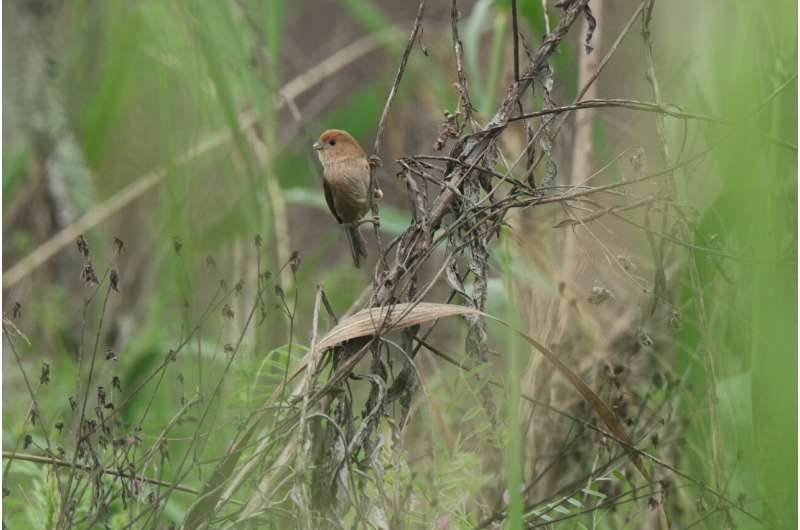This article has been reviewed according to Science X's editorial process and policies. Editors have highlighted the following attributes while ensuring the content's credibility:
fact-checked
peer-reviewed publication
trusted source
proofread
As urban heat rises, bird diversity declines: 336-city study

Humans aren't the only ones leaving town when city heat becomes unbearable. A study done on 336 cities in China concludes that heat-retaining buildings and paved surfaces are directly related to a loss in bird diversity. These findings from scientists at Zhejiang University and the Cornell Lab of Ornithology are published in the journal Science of the Total Environment.
"The heat-retention characteristic of cities is a well-known phenomenon called the urban heat island effect," said Frank La Sorte at the Cornell Lab. "Our findings document, for the first time, the direct relationship between bird diversity and the urban heat island effect across multiple seasons. The heat island effect is not unique to Chinese cities and it is likely that the patterns documented in this study are occurring in other large cities across the globe that have abundant asphalt, steel, and concrete with little green vegetation."
Study authors said birds move to cooler suburban areas, decreasing diversity in the city during the breeding and nonbreeding seasons, but the trend is especially strong during the nonbreeding season. Lower bird species diversity also persists regardless of the city's size or where it's located.
The study authors used data from an ongoing bird diversity study in China. Then they determined the surface urban heat island intensity for each city compared to its suburbs. The impact of the urban island effect was documented after controlling for each city's unique environmental and ecological setting. Scientists expected their models to show an increase in diversity during the nonbreeding season and a decrease in diversity during the breeding season.
"What we did not expect was that diversity loss was even more pronounced during the nonbreeding season," said senior author Jiayu Wu at Zhejiang University. "We predicted that the urban heat island effect would relax the costs of staying warm during the winter, making it less necessary for birds to migrate and resulting in an increase in species diversity during the nonbreeding season, especially in colder cities."
Instead, the urban heat island effect on bird diversity remained consistently negative during both the breeding and nonbreeding seasons in the southern, northern, and northwestern regions of China. Results for the Qinghai-Tibet Plateau region were quite different however, with the heat island effect having a positive relationship with the number of species. The scientists suggest that adaptations to the alpine environment may have increased tolerance to extreme temperatures, enabling local birds to thrive in the region's urban environments.
With climate change boosting temperatures around the world, cities are likely to get even hotter, adding yet another challenge to birds that already face threats such as pollution and habitat fragmentation. Though vegetation can offset some of the heat, this study concludes it's not been enough so far to wipe out the overall negative effect of urban heat islands in most of China. An area of further study could be determining just how much vegetation is needed to make city life bearable for birds and humans.
More information: Zhizheng Cai et al, The surface urban heat island effect decreases bird diversity in Chinese cities, Science of The Total Environment (2023). DOI: 10.1016/j.scitotenv.2023.166200
Journal information: Science of the Total Environment
Provided by Cornell University


















